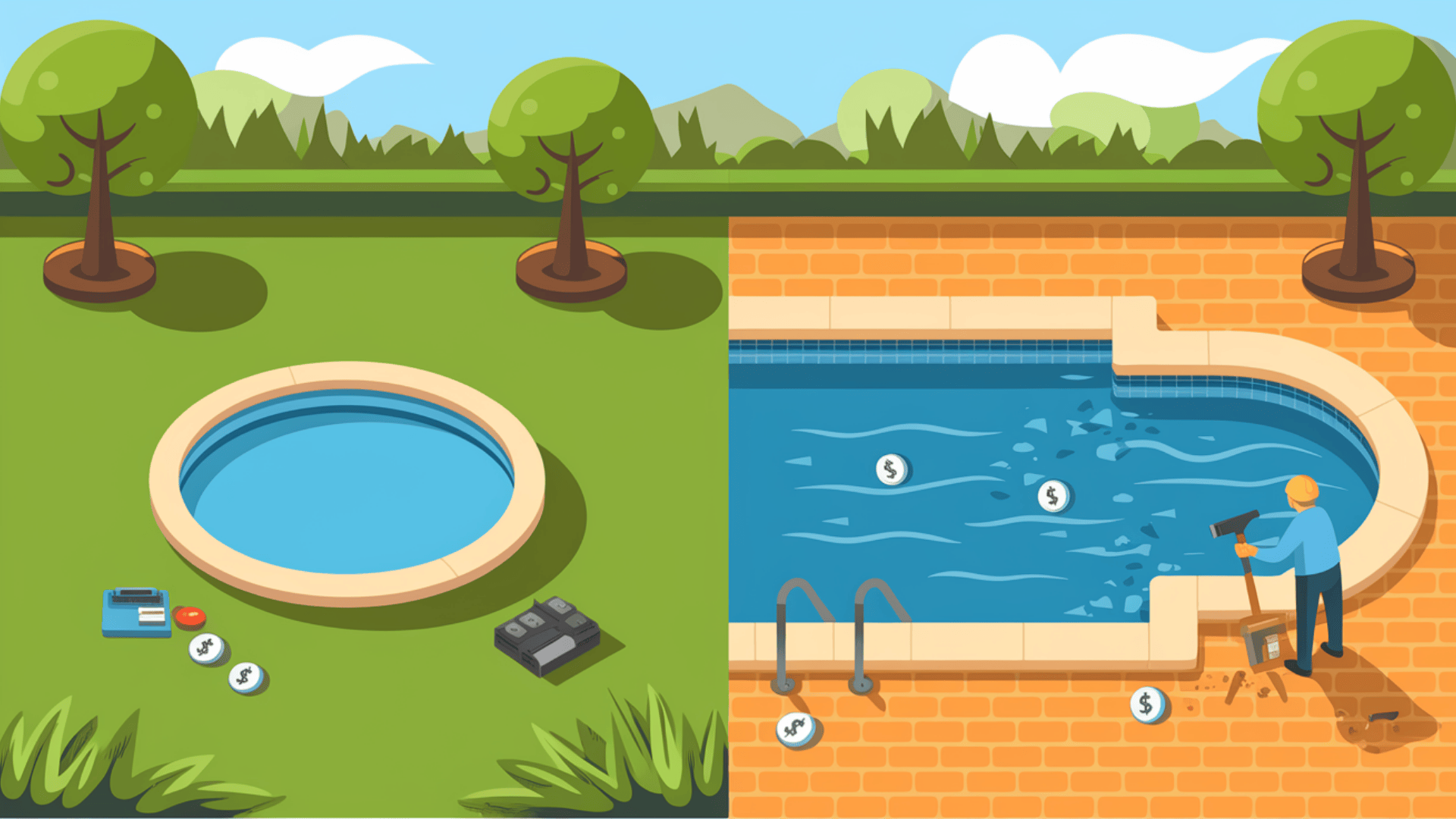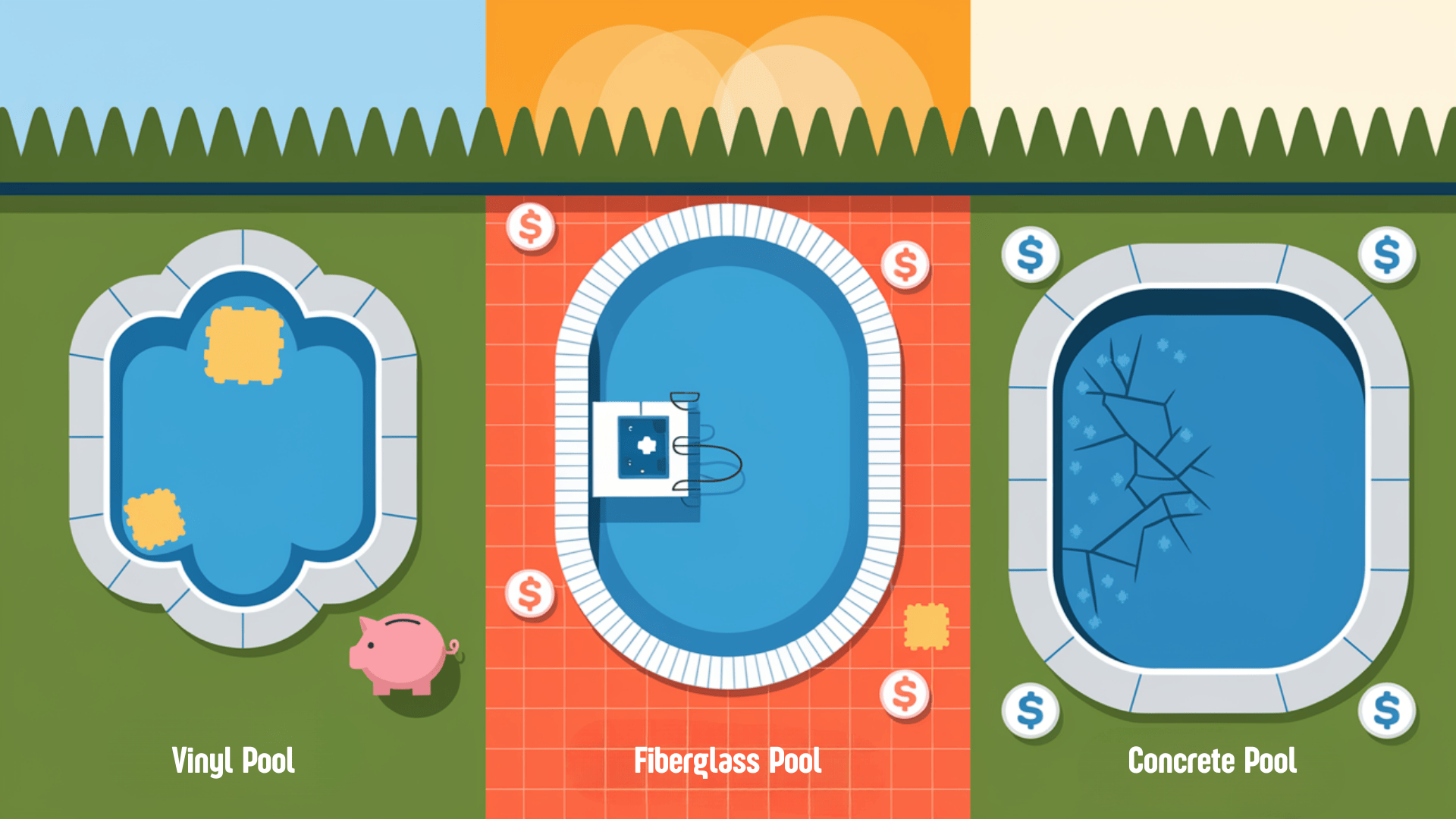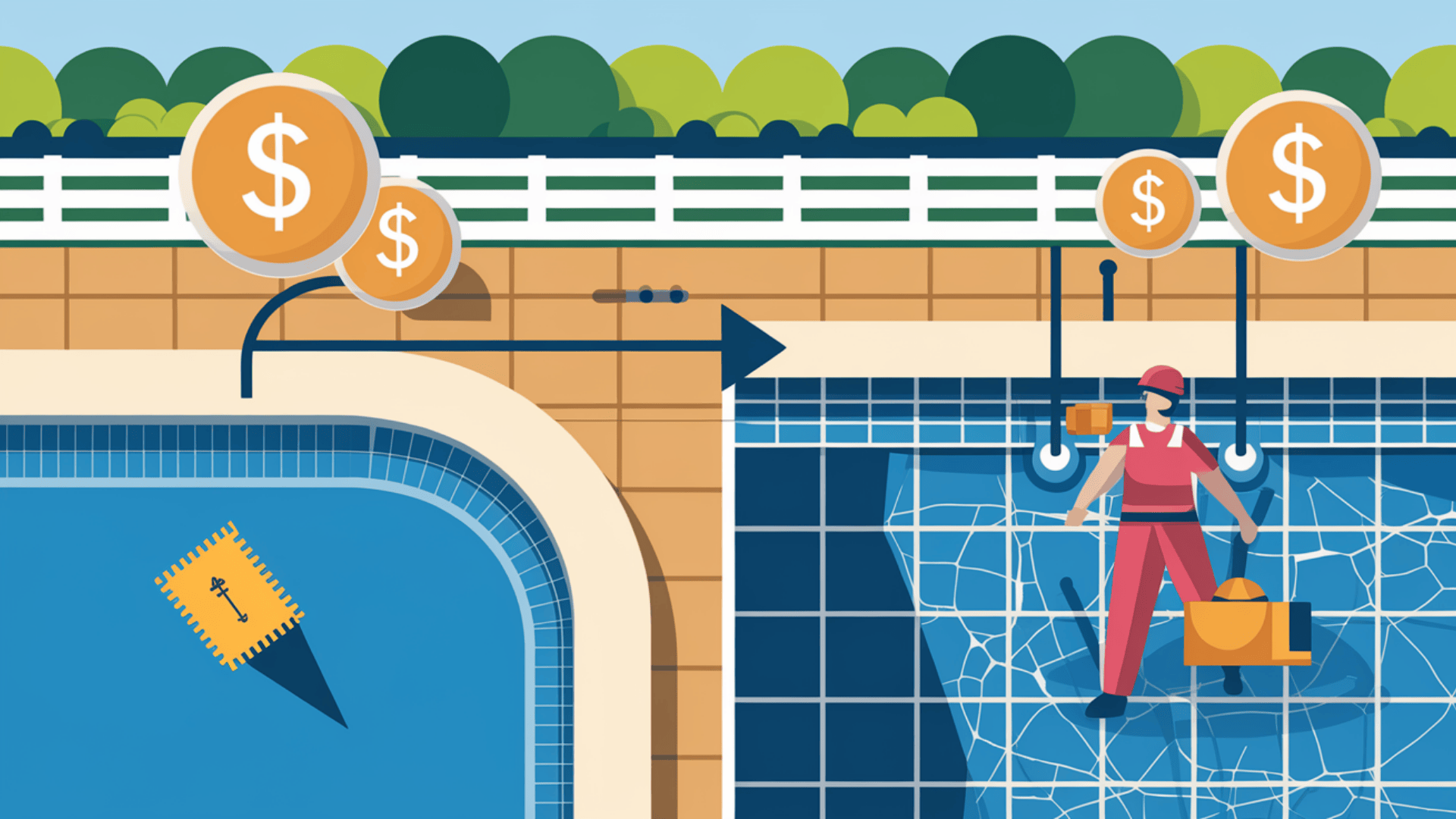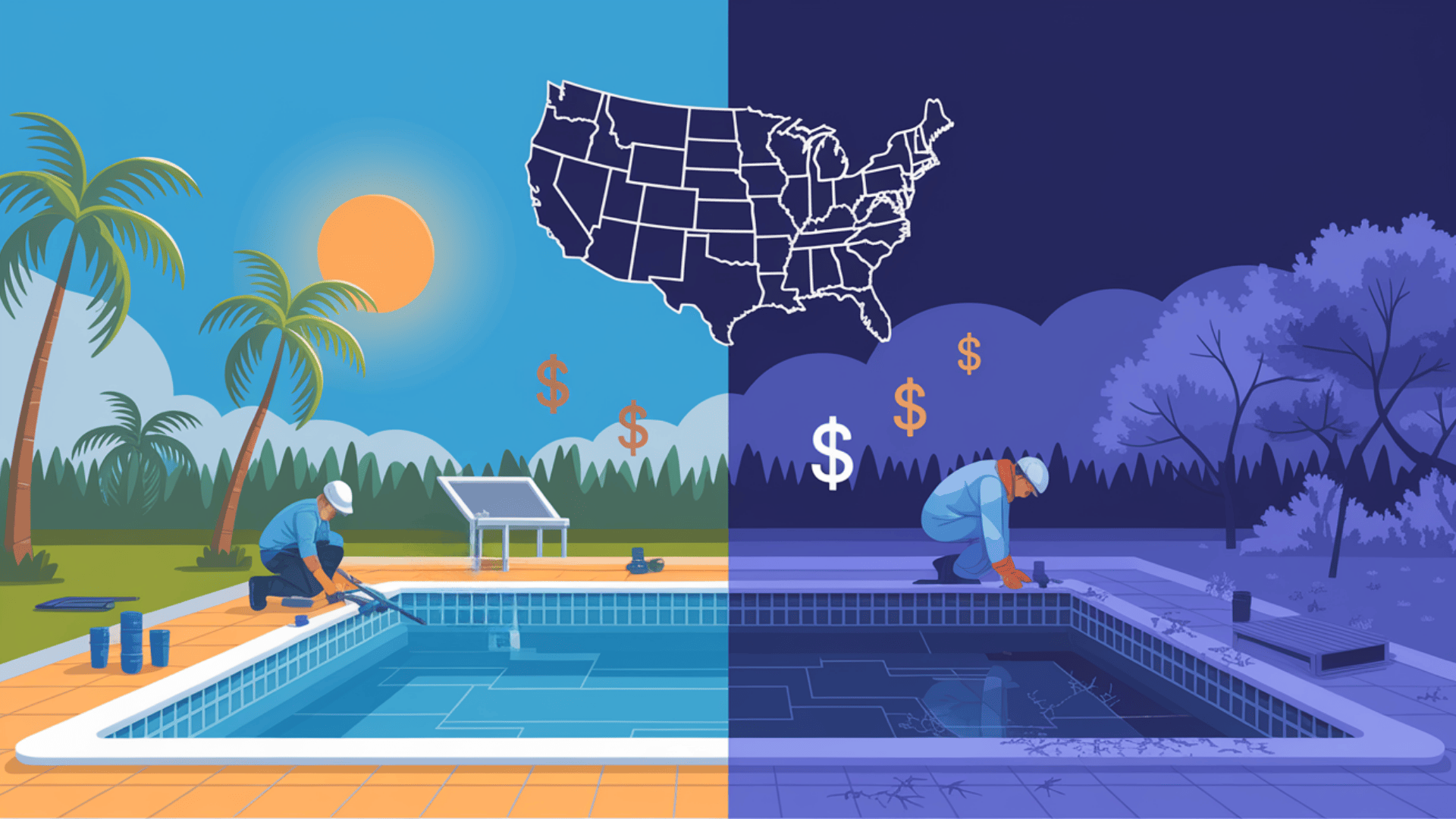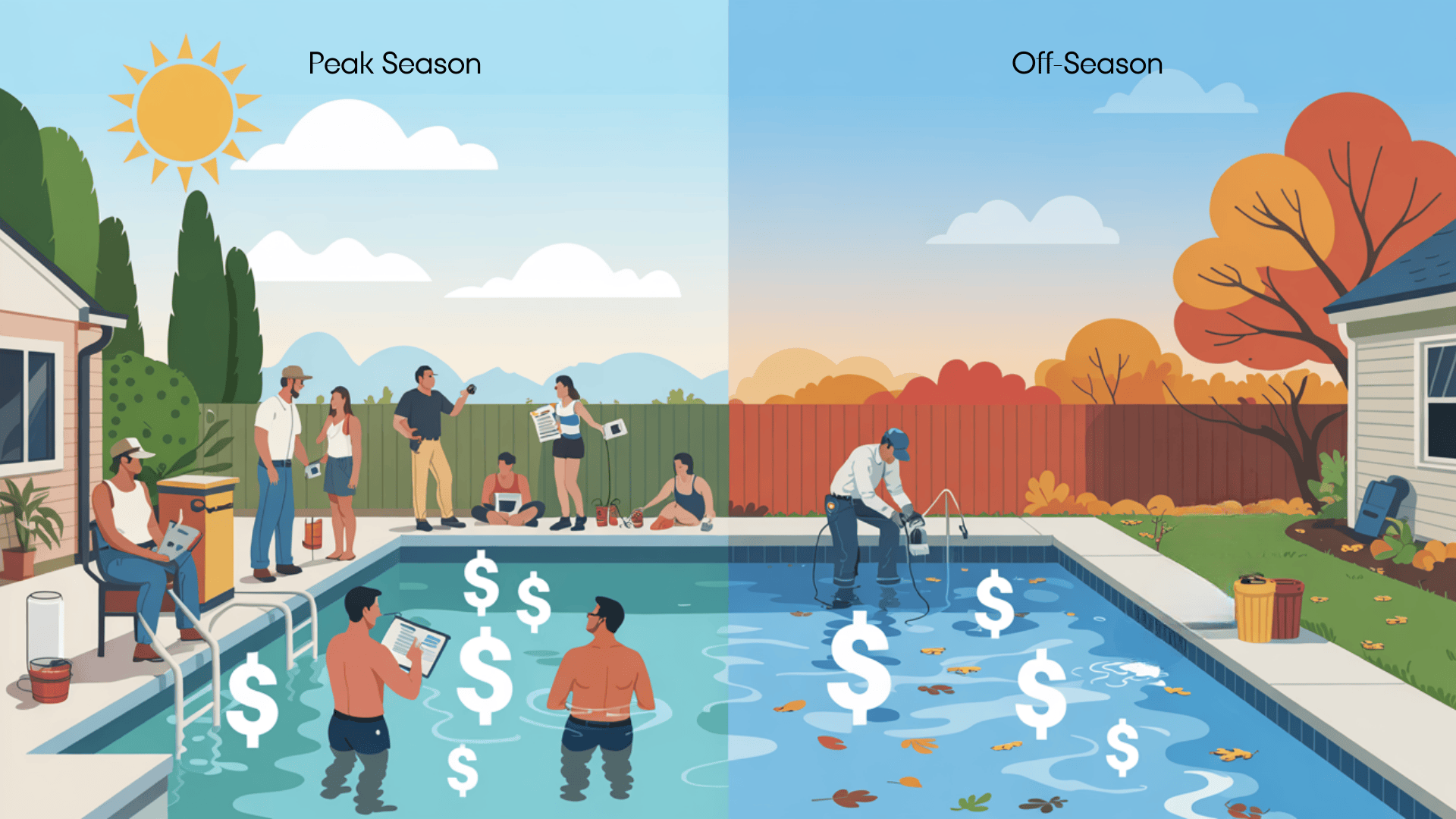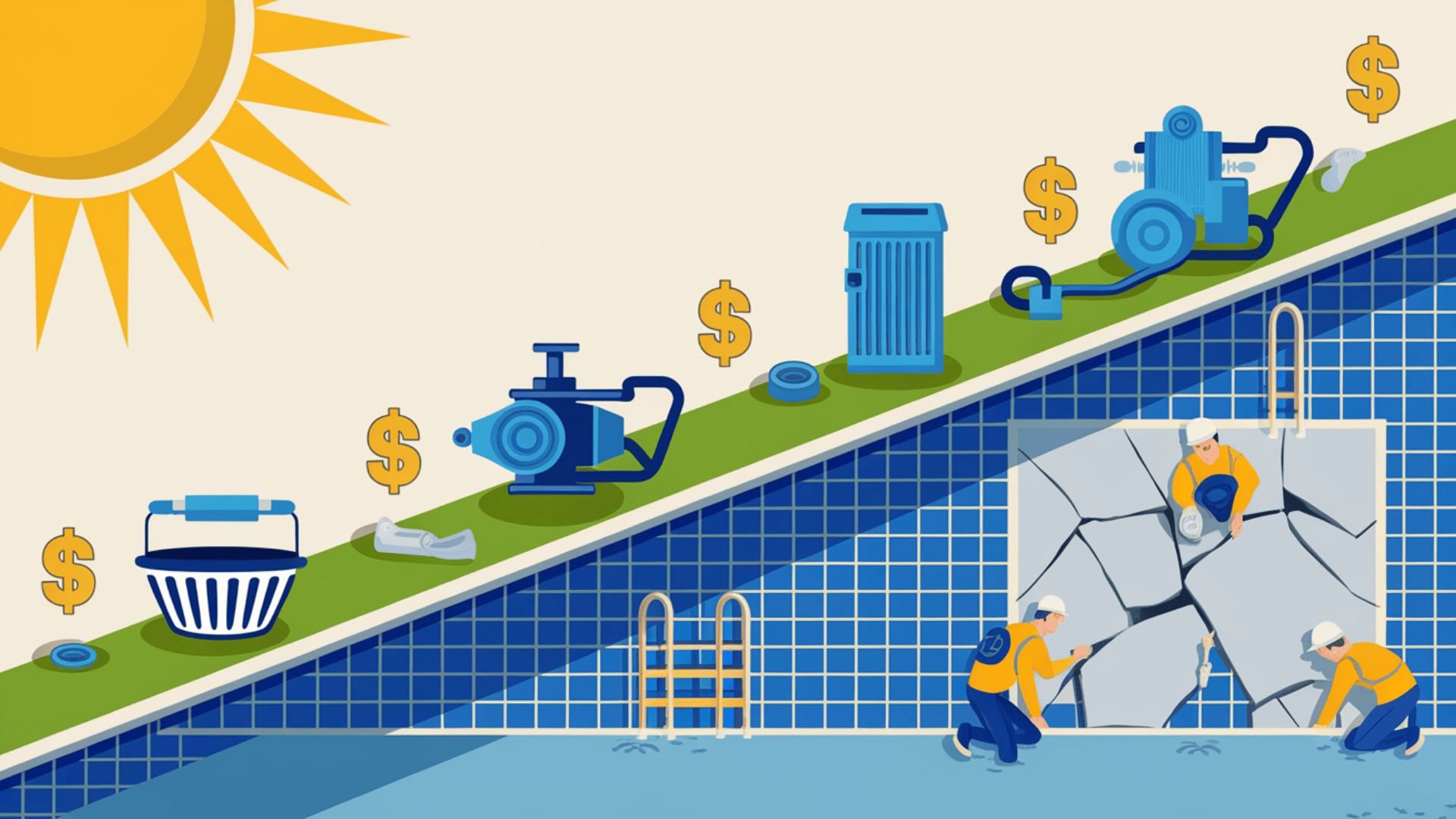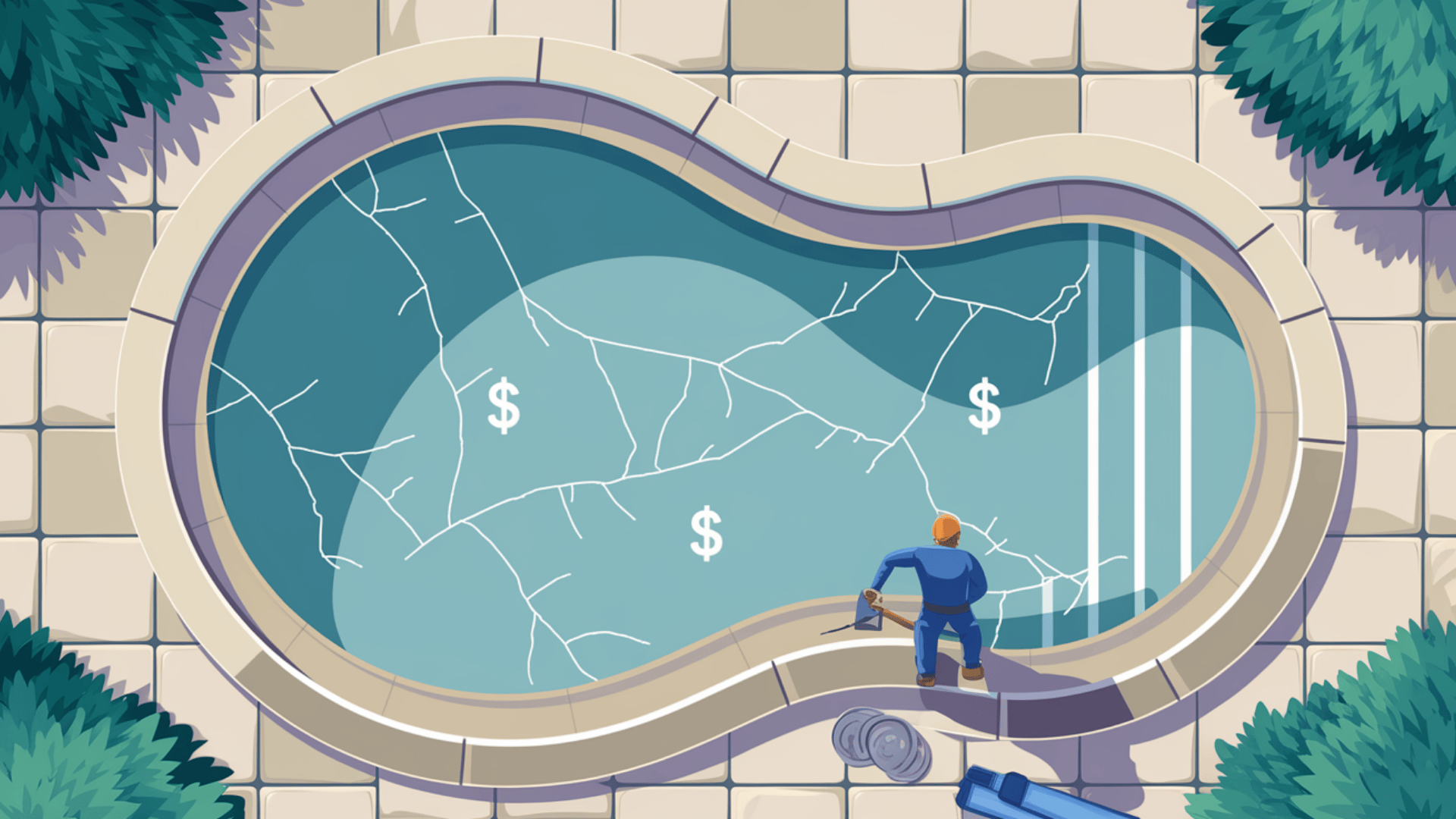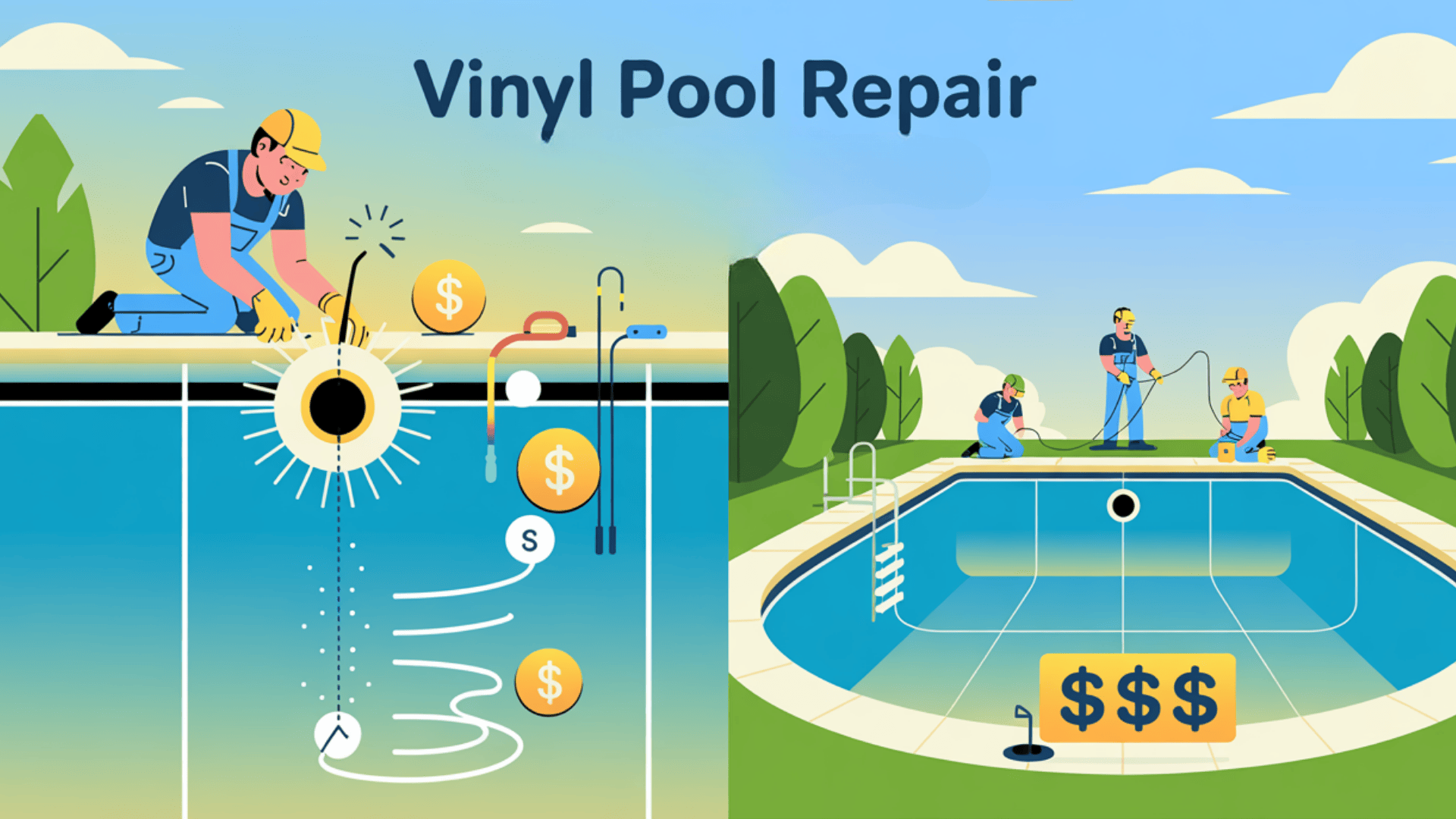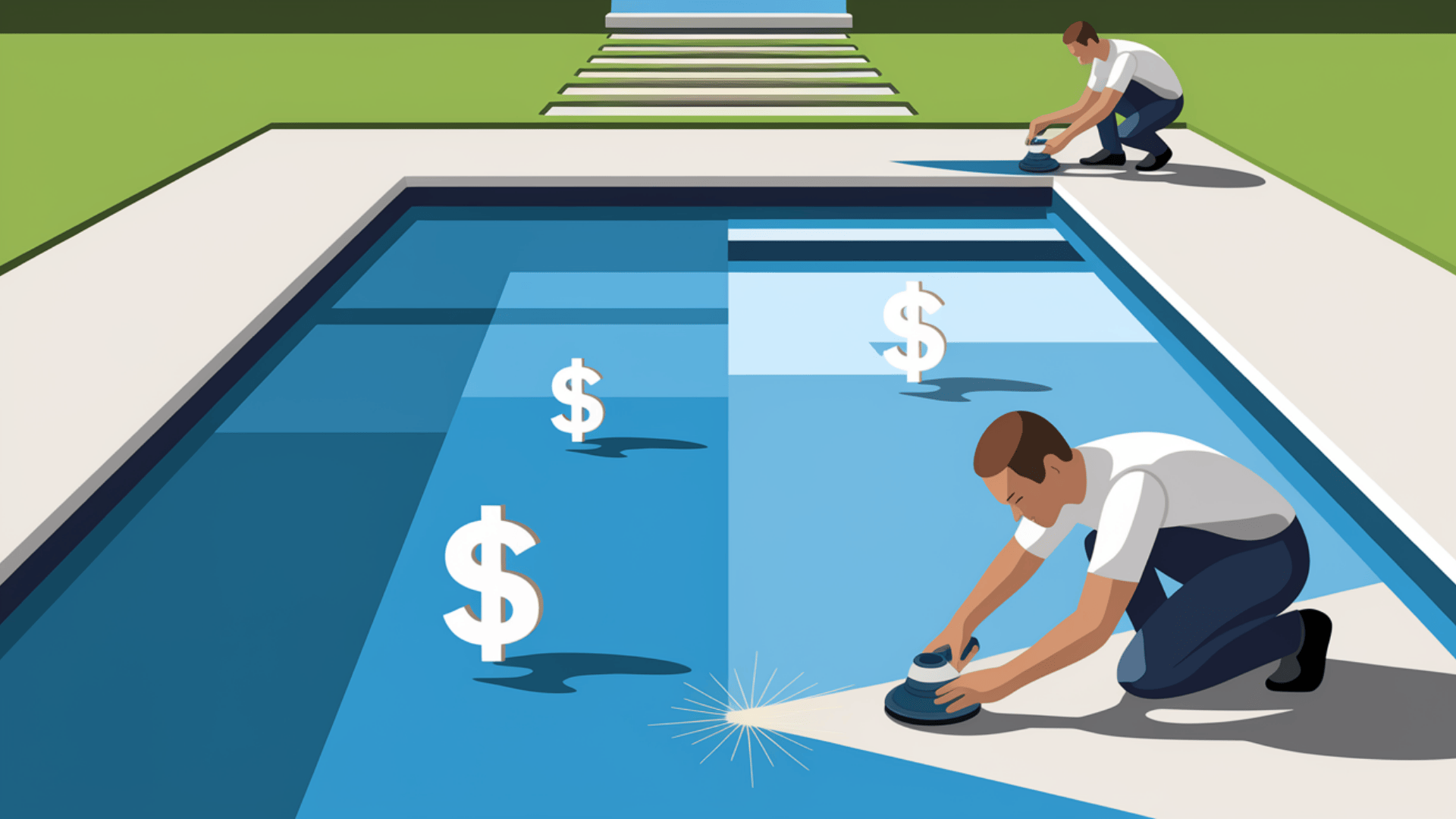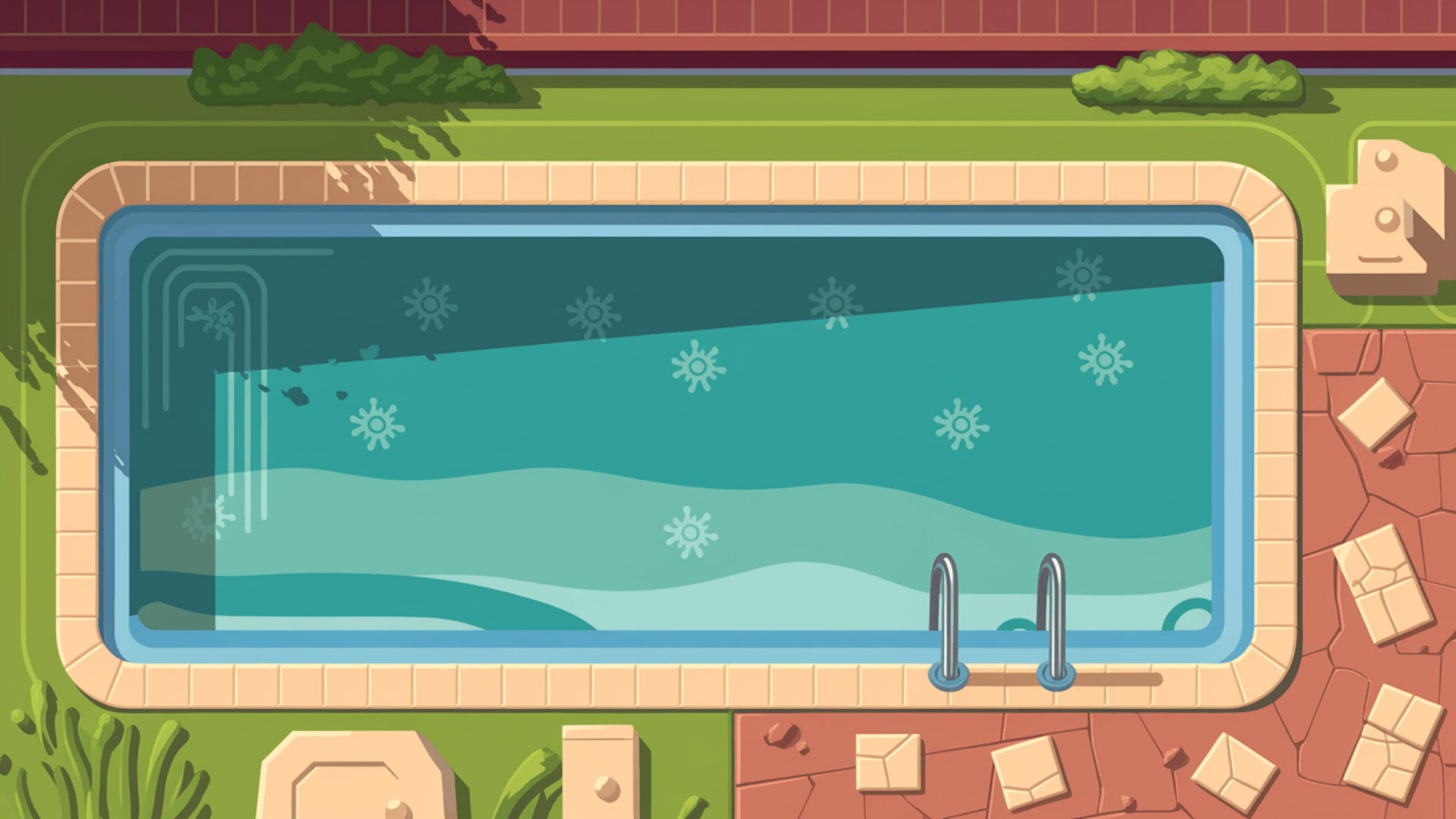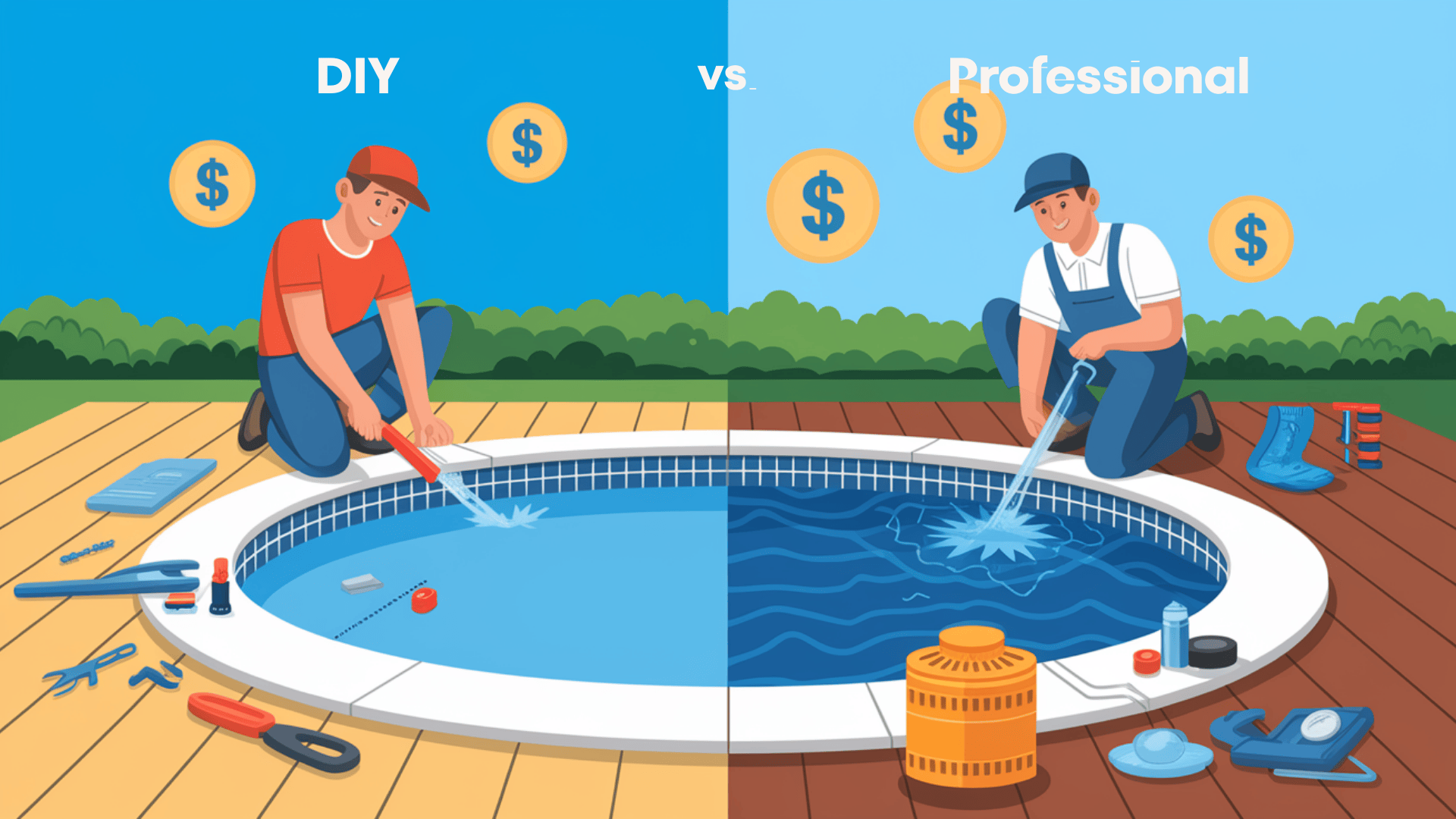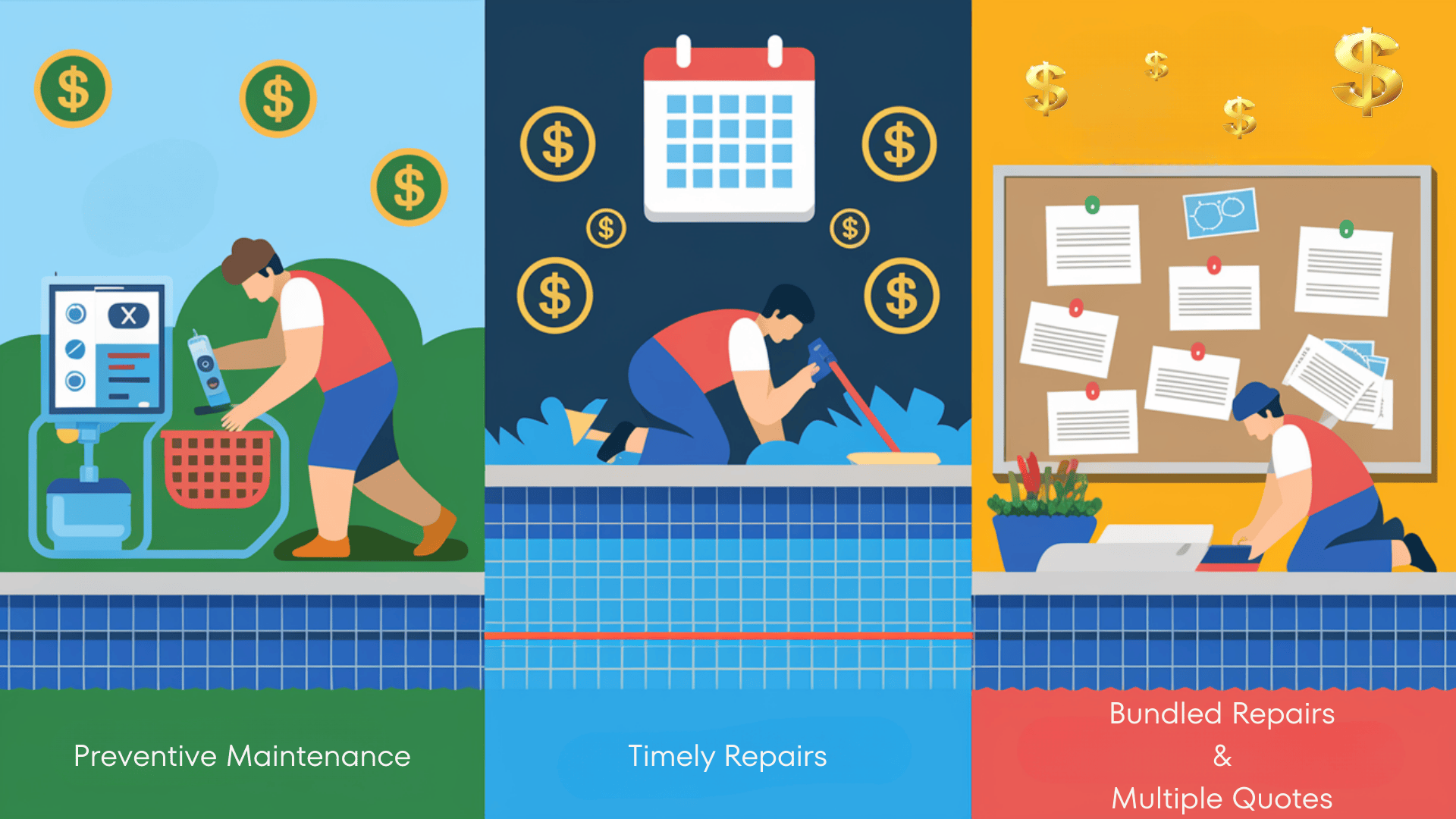Pool problems never come at a good time. That unexpected leak, strange pump noise, or stubborn cloudy water can quickly turn your backyard oasis into a source of stress—and potentially major expense.
Understanding typical pool repair costs helps you budget wisely and avoid unexpected bills that can drain your wallet.
Most homeowners spend between $239 and $1,124 on pool repairs, with costs varying widely based on the type of repair needed, the type of pool, and the location.
Knowing what influences these prices puts you in control when getting quotes and making decisions about timing repairs.
Let’s examine the costs associated with common pool issues and explore strategies to keep them manageable without compromising quality.
How Much Does Pool Repair Cost?
Pool repair costs vary depending on the specific issues, the type of pool, and your location. Most homeowners spend between $239 and $1,124 on pool repairs, with the national average falling around $650.
The most costly pool repairs typically involve structural components or the main mechanical systems. Getting issues fixed promptly can save you thousands – small problems often grow into bigger, more costly ones when left unattended.
Here’s a quick look at common pool repair costs:
| REPAIR TYPE | COST RANGE |
|---|---|
| Minor Repairs | $100 – $350 |
| Mid-Level Fixes | $350 – $700 |
| Major Components | $700 – $1,500+ |
| Full Resurfacing | $2,500+ |
Quick tip: Regular maintenance and fixing small issues quickly can extend your pool’s life and cut down on big repair bills. For example, a small crack fixed early might cost $200, but waiting until water damage occurs could turn into a $1,000+ project.
Remember that professional inspection costs ($80-$150) are worth it when you notice anything unusual with your pool – catching problems early is the best way to keep costs manageable.
Key Factors That Influence Pool Repair Costs
When budgeting for pool repairs, several key factors will affect the cost. These elements can significantly impact the final bill, so understanding them helps you plan more effectively and potentially reduce costs.
The price tag for pool work varies widely based on multiple aspects of your specific situation. Here’s what matters most:
1. Size and Type of Pool
Small above-ground pools typically cost much less to fix than large in-ground ones. This makes sense – smaller pools have fewer materials and less water to manage during repairs.
In-ground pools often require more complex work, with costs running 30-50% higher than those for similar repairs on above-ground models.
The surface area and water volume directly impact labor time and material quantities needed for most repairs.
2. Materials Matter
The building materials of your pool greatly impact repair costs:
- Vinyl pools: Usually the cheapest to fix for small issues, but total liner swaps can be costly
- Fiberglass: Mid-range repair costs with fewer long-term problems
- Concrete: Often the most expensive to fix, particularly for surface work
Each material requires specific repair techniques and products that vary in price.
3. How Bad Is the Problem?
Minor issues, such as small holes in vinyl liners, might cost under $200 to patch, while major structural problems can run into thousands. The longer you wait to fix small issues, the more you’ll pay later.
Early detection through regular inspections can save substantial money by identifying issues before they escalate into costly repairs that require extensive work and replacement parts.
4. Where You Live
Labor rates vary by region – expect to pay more in high-cost areas. If your pool is difficult to access, workers may charge extra for the inconvenience of moving equipment. Regional climate differences also affect repair frequency and costs.
Pools in year-round warm areas often need more frequent attention due to constant use, while northern pools may face different challenges from freeze-thaw cycles.
5. Timing Your Repairs
Many pool companies offer better rates during the fall and winter months when demand typically drops. You might save 10-20% by scheduling non-emergency work for the slow season.
This applies primarily to planned upgrades or non-critical repairs that can wait. Emergency fixes will cost premium rates regardless of season, making preventive maintenance even more financially important.
Average Costs by Pool Repair Type
Pool fixes range from simple and cheap to complex and costly. Knowing typical prices helps you budget and spot potentially inflated quotes.
Leak detection typically costs $300-$500, with actual repair costs ranging from $200 to $800, depending on the location and complexity. Hidden leaks are more expensive to locate and repair than obvious ones.
Structural issues vary dramatically in price. Hairline cracks in concrete pools may cost only $300-$500 to repair, while major structural issues can range from $2,000 to $5,000. Beam repairs typically fall in the $1,000-$2,000 range.
For equipment repairs, here’s what you should expect:
| EQUIPMENT | REPAIR COST | REPLACEMENT COST |
|---|---|---|
| Pump | $150-$500 | $600-$1,200 |
| Heater | $400-$800 | $1,500-$3,500 |
| Filter | $150-$500 | $300-$1,000 |
Basic parts like skimmers ($50-$300), drains ($400-$700), and lights ($100-$400) fall on the lower end of repair costs, but can add up when multiple items need work.
Surface work varies from minor patches at $200-$500 to complete concrete surface renewal at $3,000-$7,000, making it among the priciest pool repairs. Tile work typically costs $1,500-$2,500 for partial replacement.
Pool Repair Costs by Pool Type
Different pool materials require specific repair methods, which can impact both short-term and long-term costs. Each type has its own common problems and price points to consider when planning your budget.
1. Concrete Pools
Concrete pools tend to have higher repair costs but last many years with proper care. Small crack patches run $300-$500, while mid-size repairs range from $700-$1,500. Complete surface renewal costs $3,000-$7,000.
While these pools cost more to fix, they typically need major work less often than other types.
2. Vinyl Pools
Vinyl pools offer lower initial costs but may need more frequent attention. Small punctures cost $100-$350 to patch, with larger tears running $200-$500 to fix. A full liner swap costs $1,500-$4,000, depending on size.
Remember that vinyl liners typically need replacement every 7-10 years, an ongoing cost to consider.
3. Fiberglass Pools
Fiberglass falls between concrete and vinyl for most repair costs. Small chips or cracks cost $300-$500 to fix, while surface coating runs $800-$1,200. Structural fixes typically cost $1,000-$2,000.
Fiberglass generally requires fewer repairs than other pool types, but can develop issues if not properly installed.
Which pool type costs the least to maintain over time?
Typically, fiberglass wins for long-term value, with fewer major repairs needed across its lifespan. Concrete costs more to maintain but offers the most durability, while vinyl provides the lowest upfront costs but needs more regular attention.
Signs You Need Pool Repairs Right Away
Catching problems early saves money and prevents bigger headaches. Not all pool problems announce themselves with obvious leaks or broken parts. Many serious issues start subtly, so stay alert for these warning signals.
If your pool loses more than ¼ inch of water daily (beyond normal splash and evaporation), you likely have a leak. Ignoring this can lead to structural damage, higher water bills, and chemical waste.
Cloudy water or algae that return quickly after treatment typically signal circulation or filtration problems.
Pay attention to sounds from your equipment. Normal pool systems run quietly – grinding, squealing, or humming from pumps or motors signals wearing parts. Fix these promptly or face full replacement soon.
Visual inspection can reveal a lot:
- Cracks in the pool surface
- Loose or missing tiles
- Damaged coping stones
- Rust spots on metal components
A sudden jump in electric bills often means your pump or heater is working too hard due to a hidden problem.
This extra strain shortens equipment life while costing you more each month – a double financial hit that makes prompt repairs even more important.
DIY Pool Repairs vs. Hiring a Pro
Some pool fixes are perfect for handy homeowners, while others require professional skills. Before grabbing your tools, consider what jobs make sense to tackle yourself and when calling a pro actually costs less in the long run.
With basic tools and careful research, most pool owners can handle routine maintenance tasks. Testing and balancing water chemistry, replacing skimmer baskets, clearing clogged lines, fixing minor vinyl tears with patch kits, and replacing filter media are all reasonable DIY projects.
What You Can Fix Yourself
The simplest pool repairs often need just basic tools and a bit of patience:
- Water testing and chemical balancing
- Skimmer and pump basket cleaning
- Small vinyl liner patches
- Filter cleaning and media replacement
- Basic winterizing steps
- Light bulb swaps (for above-water fixtures)
These tasks can save you $75-$150 per service call and help you learn how your pool functions.
When to Call the Professionals
Some jobs warrant professional help due to complexity or safety concerns. Gas heater problems carry carbon monoxide risks, while electrical issues with pumps or lighting pose shock hazards.
Any structural repairs, complete liner replacements, major equipment installation, or plumbing leaks within walls or under concrete are best left to experts.
Failed DIY attempts often end up costing more than hiring a pro from the start. Common mishaps include:
- Using the wrong materials that fail quickly
- Improper sealing causing leaks
- Misdiagnosed problems leading to unnecessary parts purchases
- Voided warranties from amateur repairs
Professional pool technicians typically charge $75-$150 per hour plus parts. While this seems high, their efficiency and guaranteed work often prove worthwhile for all but the simplest jobs.
How to Save Money on Pool Repairs
Smart maintenance and thoughtful planning can cut your pool repair costs significantly without cutting corners on quality or safety.
The best way to save on repairs is to prevent them in the first place. Test water weekly and maintain proper chemistry to prevent corrosion and scaling.
Here are the 5 ways to cut pool repair costs:
- Practice Preventive Maintenance – Check water chemistry weekly, inspect equipment monthly for unusual noises, clean baskets and filters regularly, and brush pool surfaces to prevent buildup.
- Time Your Repairs Strategically – Schedule non-urgent work during the off-season (October to March) when companies offer 10-30% discounts to keep crews busy.
- Bundle Multiple Repairs Together – When facing major work, combine similar jobs to save on service fees and update related systems at once, rather than paying for multiple visits.
- Explore Coverage Options – Review your homeowner’s insurance and manufacturer warranties to determine if they cover damage from storms or equipment failures.
- Get Multiple Price Quotes – Collect 3-5 estimates for big jobs, verify licenses and insurance, and check customer reviews before choosing a contractor.
When facing major repairs, such as surface renewal, consider making other updates simultaneously.
The crew and equipment are already in place, so adding deck repairs, new lighting, or upgraded equipment costs less than undertaking each job separately.
That’s a Wrap
Staying ahead of pool repair costs comes down to three key practices: regular maintenance to catch small issues early, strategic timing of non-emergency repairs during off-seasons, and getting multiple quotes from licensed professionals.
By understanding typical price ranges for common problems and what factors drive those costs, you’re better equipped to budget appropriately and recognize fair pricing. Remember that investing in quality repairs now often prevents more costly fixes later.
Your backyard pool should be a source of relaxation and enjoyment, not financial stress. With the right approach to maintenance and repairs, you can keep costs reasonable while maintaining a beautiful, functional pool for years to come.
If you’re interested in learning more about maintaining a pool, click here for additional information.


